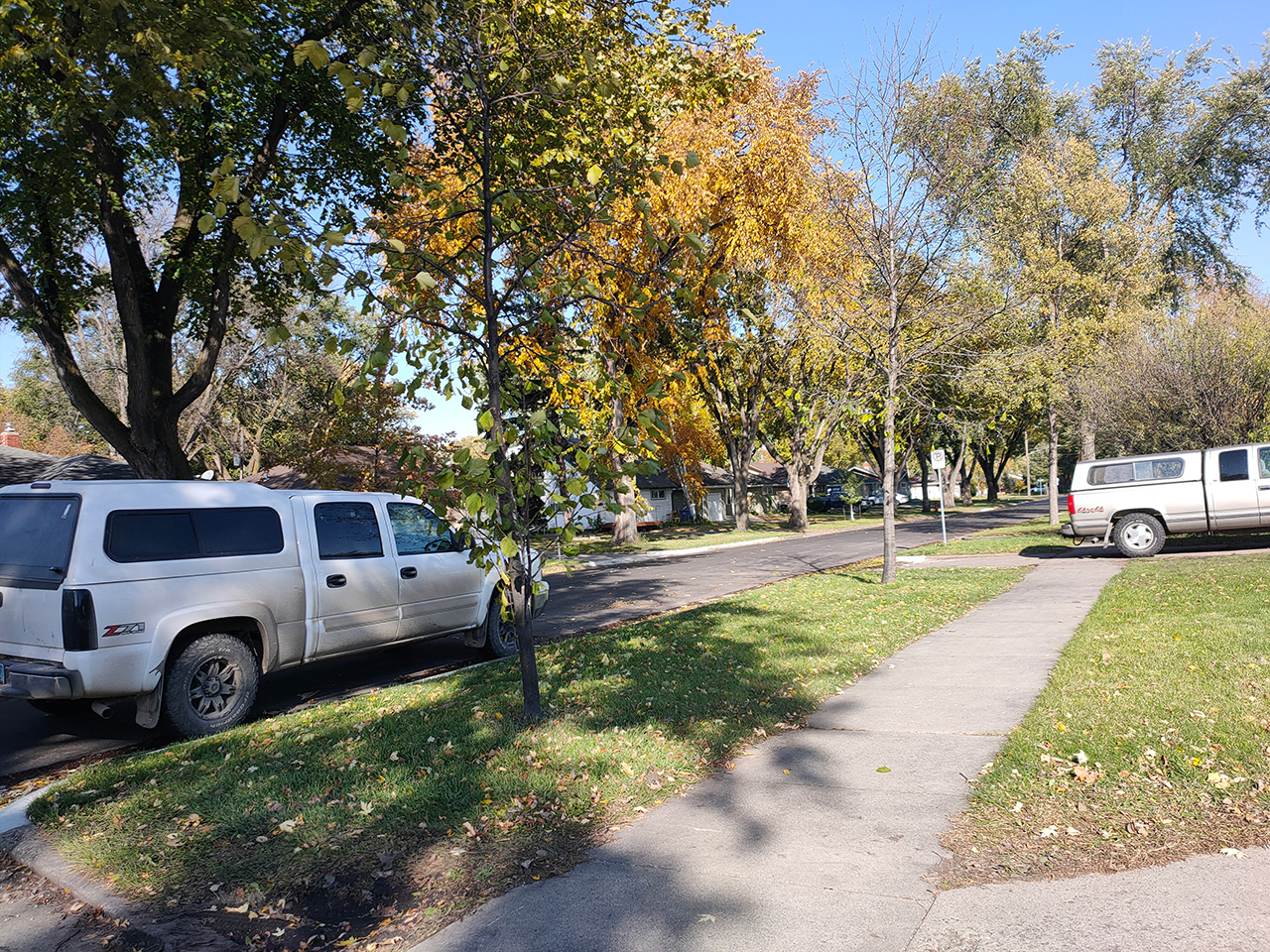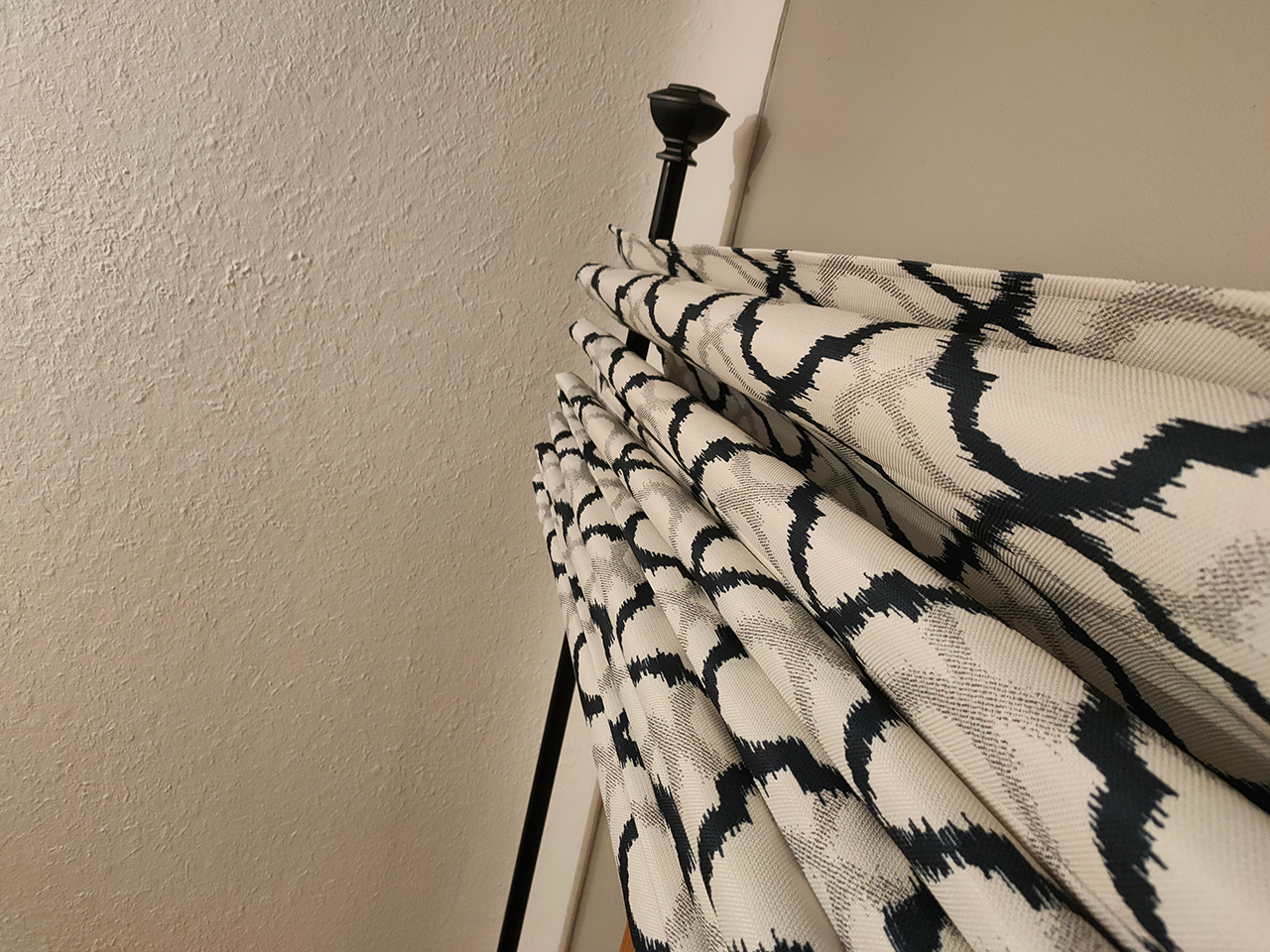OPPO Reno 2 Review: Full-Screen Display, 4x Camera Power, And A Trade-Off
- Decent set of cameras
- Beautiful industrial design
- Full frontside display
- Good battery life
- Price is right
- Not officially available in USA
- No water/dust-proofing
- Frontside (slide-out) camera just OK
The OPPO Reno 2 (or OPPO Reno2 if you like) is an interesting piece of hardware. It's a smartphone thats part of a very, very similar set of associated handsets, all under the same "Reno" branding name. OPPO's not failed to deliver impressive smartphone hardware to our review bench since we first started reviewing their devices. But here's the thing – if a phone has good hardware but less-than-great software, is the overall experience still good enough for the price?
Hardware
OPPO Reno 2 has a 6.5-inch AMOLED touchscreen with an 87.5% screen-to-body ratio. It'd be higher but for it's bezel – otherwise there's nothing in this display's way of covering the entirety of the front of this smartphone. There's no notch, there's no punch-hole, there's no need to make way for a front-facing camera.*
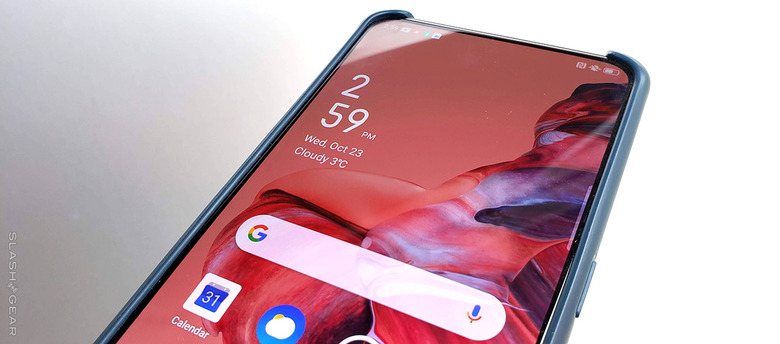
The display here is pretty decent. It's sort of similar to what we've seen with the OnePlus 7 devices this year – AMOLED, full-screen – so slightly better than the OnePlus 7T with its 6.55-inch display with water drop notch – but not quite as large or as pixel-dense as the 7 Pro.
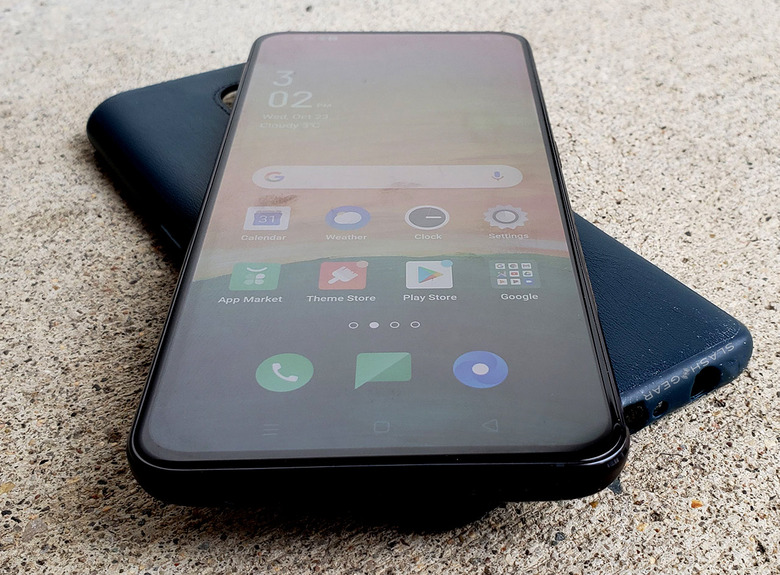
This display also has its own under-display fingerprint scanner. This fingerprint scanner works pretty much as well as the same sort of scanner found in the OnePlus 7 Pro/OnePlus 7T.
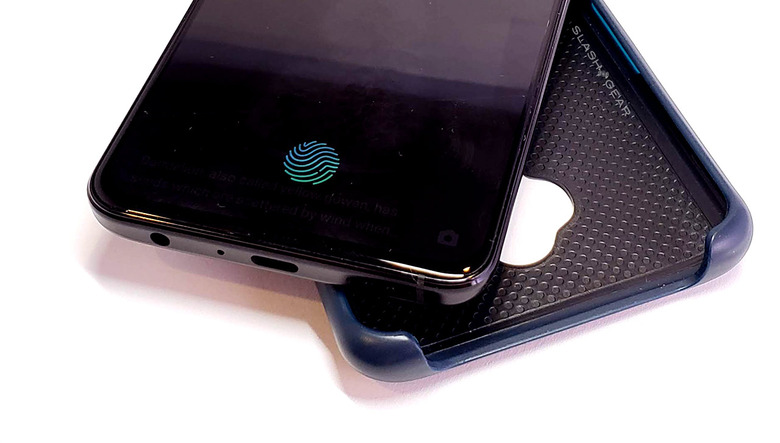
*Instead of interrupting the display up front, the front-facing camera on the OPPO Reno 2 lives on a sliding "fin". It's akin to a fin on a shark – though a shark's fin cannot move mechanically. This mechanical piece of hardware slides up when its standard camera app sends a request to use the front-facing camera.
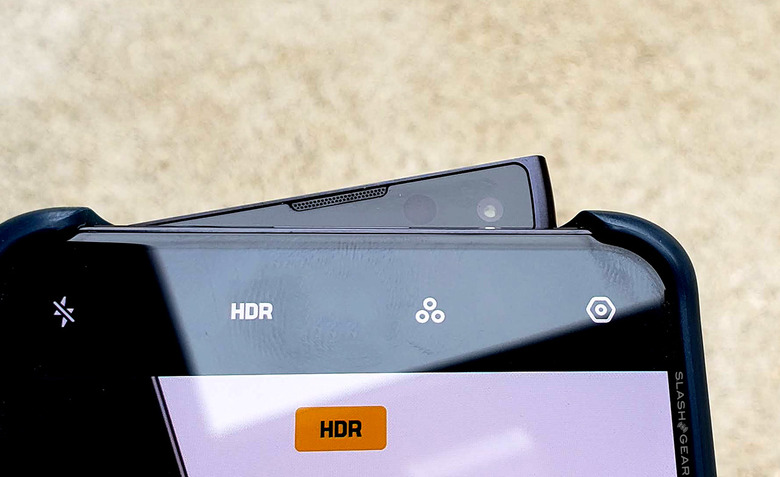
The front-facing camera on this device is 16MP with f/2.0 aperture, 26mm (wide angle) lens, a 1/3.1" sensor and 1.0um sized pixels. There's also an LED flash here, the ability to capture 1080p video at 30 frames per second, and HDR photo capabilities. The camera takes OK photos – good enough for the disappearing-media action of apps like Snapchat.
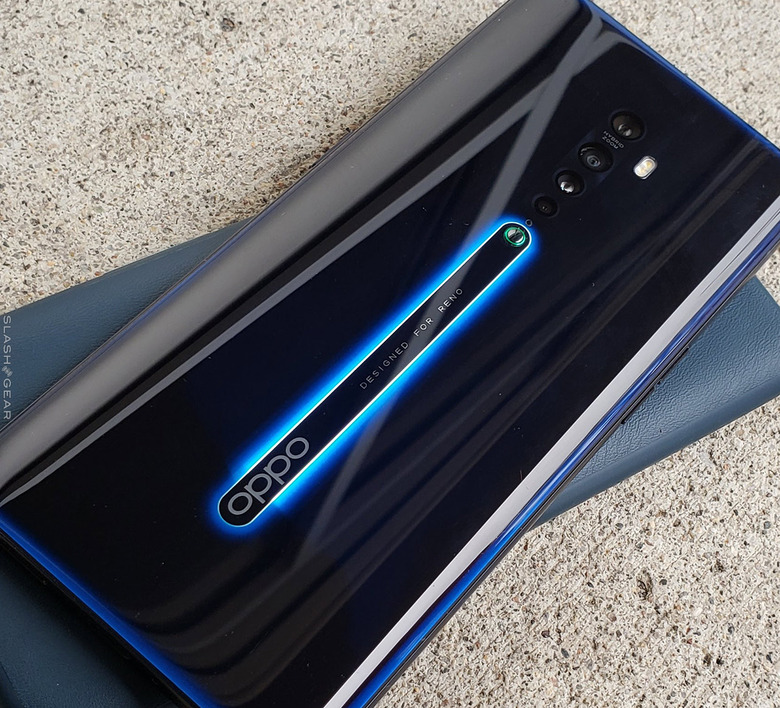
The backside of this phone – the part you'll probably cover up with a case right out the box – is quite visually spectacular. We're looking at the Luminous Black version here. There's also an Ocean Blue and a Sunset Pink out there in various regions of the world.
The combination of darkness and light-lit transparent elements with blue gradients up and down the sides really makes for a wonderful piece of industrial design. The little "pip" just below the cameras is a very interesting element as well – it's there to keep the camera lens glass up and safe from anything that might be grinding between said lenses and a flat table. That's just smart.
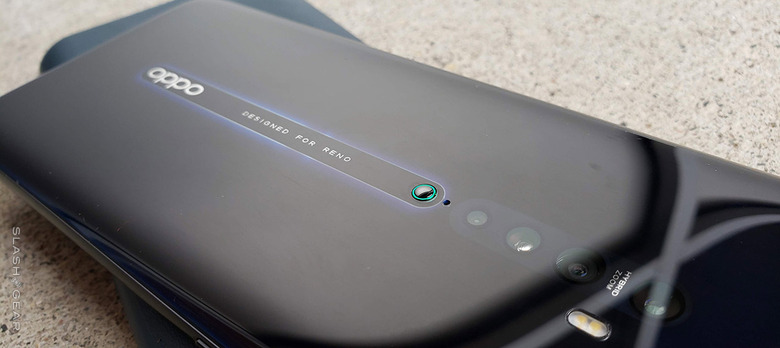
Between the display and the back-facing cameras (which we'll get to below), this device makes for a real contender for the higher end of the midrange smartphone market. Unfortunate for OPPO, we've also gotta look at the software, and the software included with this phone isn't particularly stellar.
Software
Inside this device we've got Android. This device's Android isn't like what you'll find on a OnePlus device, nor like what you'd find on a Samsung Galaxy device. Instead, it's running what OPPO calls "ColorOS" – and it's just a bit simpler a look at Android than your average non-OPPO smartphone.
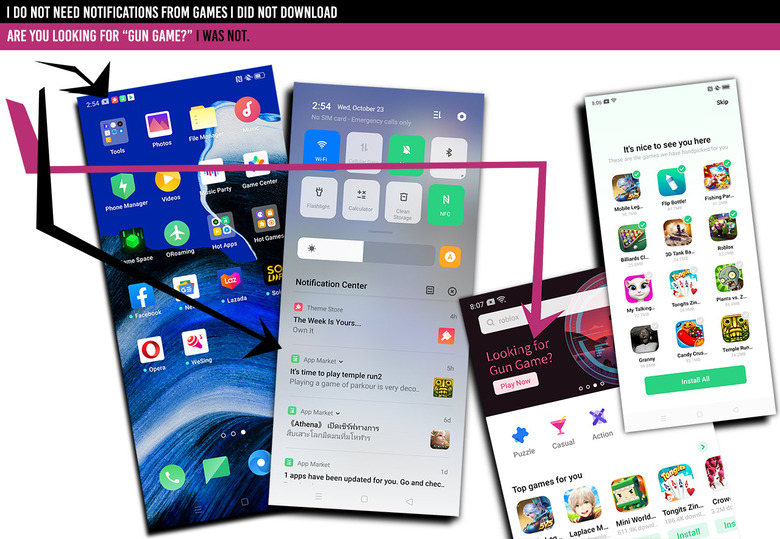
This device is running ColorOS 6.1, which is built on a base of Android 9 Pie. This means it's up to the second-most new version of Android, in one sense – but it also means you're not likely going to get Android 10 any time soon. The more software that exists on top of Android, the more difficult it becomes for the maker of the smartphone to implement Google's latest version of Android.
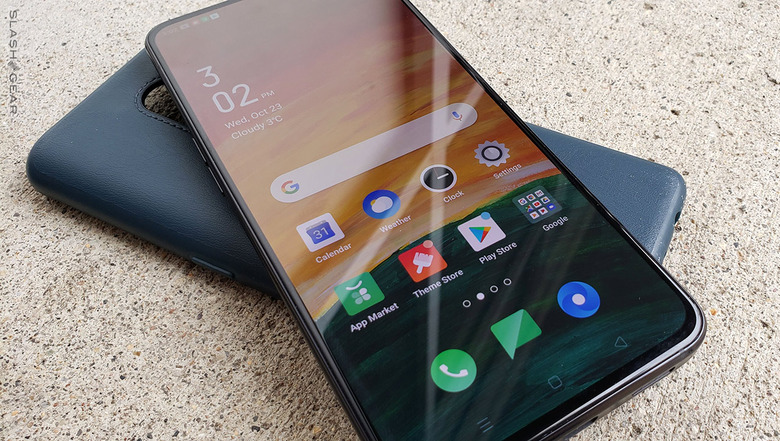
OPPO doesn't shy away from a variety of pre-installed apps, and this smartphone clearly wasn't intended for a USA-based audience right out the gate. We're able to uninstall the vast majority of these apps – but we'd certainly rather have a phone that doesn't require that we go through this process in the first place.
We've got similar complaints about the notifications that appear on the phone from time to time. The apps here – if not properly removed right out the gate – aren't the sort that leave you alone until you open them up yourself. This phone was not made for people used to an iPhone or Google Pixel experience.
Cameras
The cameras on the back of this device are surprisingly decent. OPPO Reno 2 isn't quite as spectacular as the OPPO Reno 10x Zoom when it comes to above-average camera feature quality – but it definitely punches above its weight.
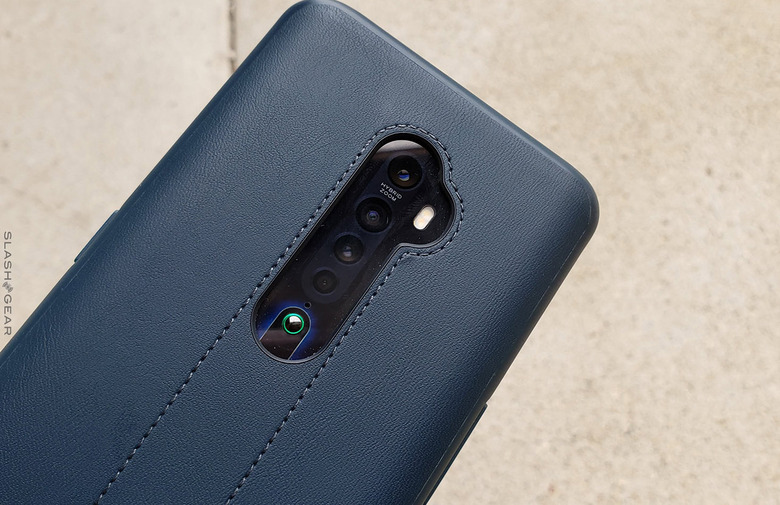
The main shooter on this OPPO Reno 2 is a 48-megapixel camera with f/1.7 aperture, a 26mm (wide) lens, 1/2.0-inch sensor, capturing pixels that are 0.8µm in size. This camera unit works with PDAF as well as OIS (Optical Image Stabilization) tech.

The back also features a 13MP camera with f/2.4 aperture, 1.0µm pixels, a 1/3.4-inch sensor, and PDAF. This is a telephoto lens, capable of 2x optical zoom and 5x "hybrid zoom". There's also an 8-megapixel camera with aperture f/2.2, with a 13mm (ultrawide) lens and a 1/3.2-inch sensor that'll capture 1.4µm size pixels.
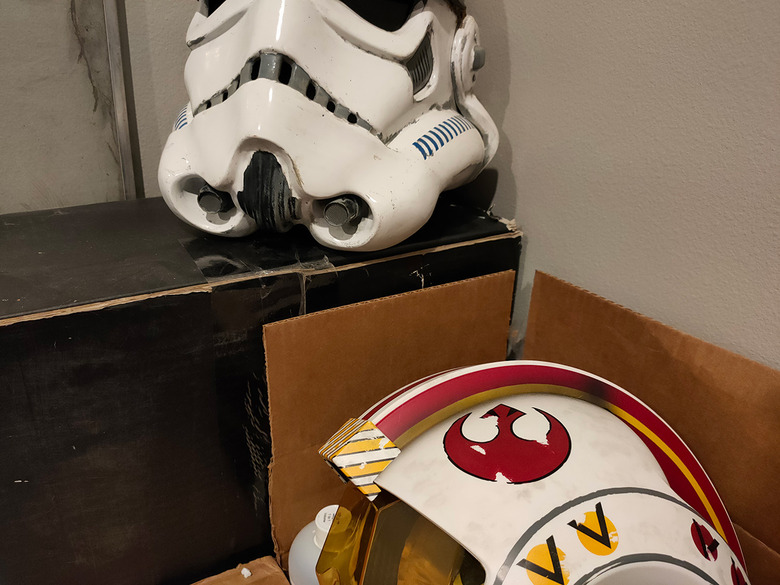
The last lens is what OPPO calls a "bokeh lens" – which basically just meant it'll assist with deducing focus for you. This smallest of the four cameras is 2MP B/W with f/2.4 aperture, a 1/5-inch sensor, and pixel size at 1.75µm. There's a dual-LED flash on the back as well.
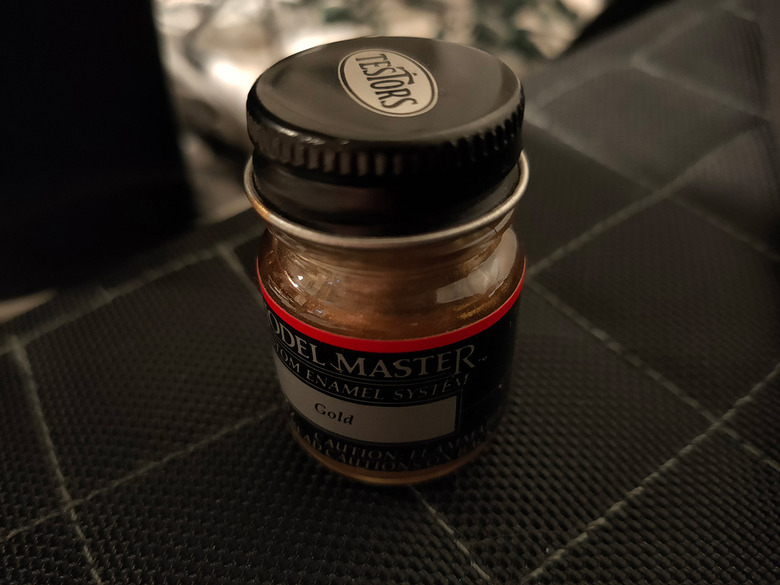
The photos this camera can capture are shown above and below. We'll be adding to this gallery if OPPO adds features to the camera in the future. For now, we're here with some photos of a few different sorts.
Battery Life
This smartphone has as long-lasting a battery as smartphones like the Google Pixel 3A XL and the OnePlus 7T. This means a full day of charge from a top-up at the beginning of the day, depending entirely on how intense your work day is – and how much of your work depends on your phone. In any case, we've encountered no element here that's made the battery life worse than its similarly-priced competitors.
OPPO included a charging system with 20W fast VOOC (specifically "VOOC 3.0"), which means we're meant to get approximately 50% of a full charge from zero in half an hour. Our tests show that to be true for the most part – not that it's particularly easy to get the battery all the way down to zero anyway.
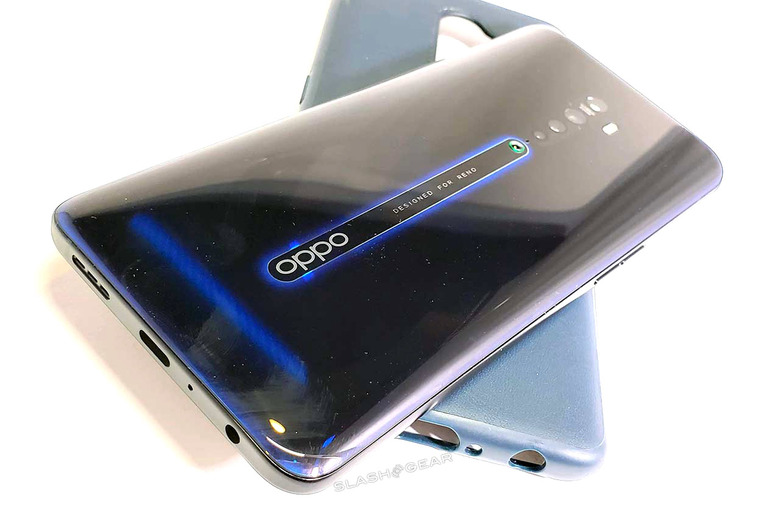
Wrap-up
If the OPPO Reno 2 (or OPPO Reno2 if you prefer) weren't hampered by an off-putting amount of bloatware, it'd be really great. It's a beautiful piece of hardware that's not really failed to perform the vast majority of the time we've had to test.
If you're living in a country in which this smartphone is available generally, it's probably a pretty good buy. If you're getting a model with 8GB RAM and 256GB internal storage, you'll probably find it for around £449 in England, or around ₹36,990 (Indian Rupee) – that's around $523 USD at the moment. This device was also launched in other regions in Europe for right around €499.





